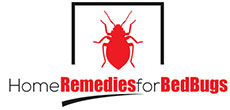 Bed bug infestation has been rampant nowadays and people are beginning to worry for a possible bed bug invasion. One of the best ways to prevent infestation is to obtain necessary information about these insects. How do they develop and grow? Where can you find them? How do they move from place to place? The answers to these questions can be reliable factors in your quest to prevent and eliminate bed bugs from your home.
Bed bug infestation has been rampant nowadays and people are beginning to worry for a possible bed bug invasion. One of the best ways to prevent infestation is to obtain necessary information about these insects. How do they develop and grow? Where can you find them? How do they move from place to place? The answers to these questions can be reliable factors in your quest to prevent and eliminate bed bugs from your home.
Bed bugs are tiny, brownish insects with flat bodies. They feed entirely on blood of humans and animals. Typical bed bugs prefer to feed on humans however they will also attack other warm-blooded animals such as dogs, cats, rodents and birds.
Bed Bugs Size and Growth
Adult bed bugs are approximately 5mm or ¼ inch long. Because of their size, they are sometimes confused with ticks, lice, fleas or other household insects. The nymph or immature bed bugs are smaller than the adults, they also have lighter color. Nymph bed bugs size ranges from 2.5mm or 0.09 inch.
Bed bugs eggs are very small, just about the size of a dust speck, and are almost transparent which makes them hard to see. Adult female bed bugs lay their eggs in dark and isolated places, delivering more than 2 eggs per day. Eggs are sticky when freshly laid. They hatch after a week at room temperatures and these newly emerged nymphs are just about the size of a pinhead.
Bed bugs cannot fly nor jump, they move from place to place by crawling over walls, floors and ceilings.
As bed bugs develop, they shed their skin five times before hitting maturity. They are required to feed before they molt.
Unlike other insects, nymphs and adults can survive for about 2 to 6 months without feeding. The thought of abandoning residents in hopes of eliminating an infestation through starvation is to no avail. Oftentimes, when there is scarcity of hosts in a certain building, they tend to transfer to neighboring units where there are foods available.
Bed bugs are nocturnal creatures; it means they are active generally at night. They hide during daytime but prefer to conceal themselves near the bed where they have easy access to sleeping people. Their diminutive size and flattened bodies allow them to fit into narrow crevices particularly in the sleeping area such as mattresses, bed frames, box springs and headboards.
How Infestations Begin
Bed bugs are adept hitchhikers. They are usually transported through luggage, clothing, used furniture. They are being transferred by clinging on belongings which are then being moved from place to place. It’s no wonder that this is a great risk for hotels and apartments.
Bed bugs move quickly that it is almost impossible to notice them crawl into our bags and belongings. Pre-owned beds, sofas and furniture are suitable habitats for bed bugs which can be transported to a different room or building. When bed bugs are introduced to a place, they rapidly crawl from room to room or floor to floor.
In contrast to filthy insects such as cockroaches and flies, bed bugs have no association with cleanliness of a residence. Even the cleanest place can be of home to bedbugs since they feed merely on blood and not on dirt.
Hiding Places
Bed bugs can easily fit themselves in almost any crevice, preferably near the bed. They will hide in these small and dark crevices and will only come out during bedtime when people are usually sleeping.
They are often found hiding in folds of mattresses and bed frames. Box springs also spare potential hiding places for bed bugs, like the upper seams and bottom edge of the box.
Headboards fastened to walls should be isolated and checked. In most cases, bed bugs are found established in the area behind the headboard. Items stored under the bed can also harbor bed bugs.
Bed bugs are oftentimes found dwelling in sofas, recliners, nightstands and dressers. If the bed and furniture are severely infested and seem impossible to treat, discarding them would be the best solution.
Apart from beds and furniture, bed bugs can also find refuge in these hiding places:
- under the carpets and floorings;
- wood molding crevices;
- roof or wall junctures;
- behind wall-fastened mirrors, picture frames, switch plates and outlets;
- under sloppy wallpaper;
- clothes inside closets;
- and curtains.




